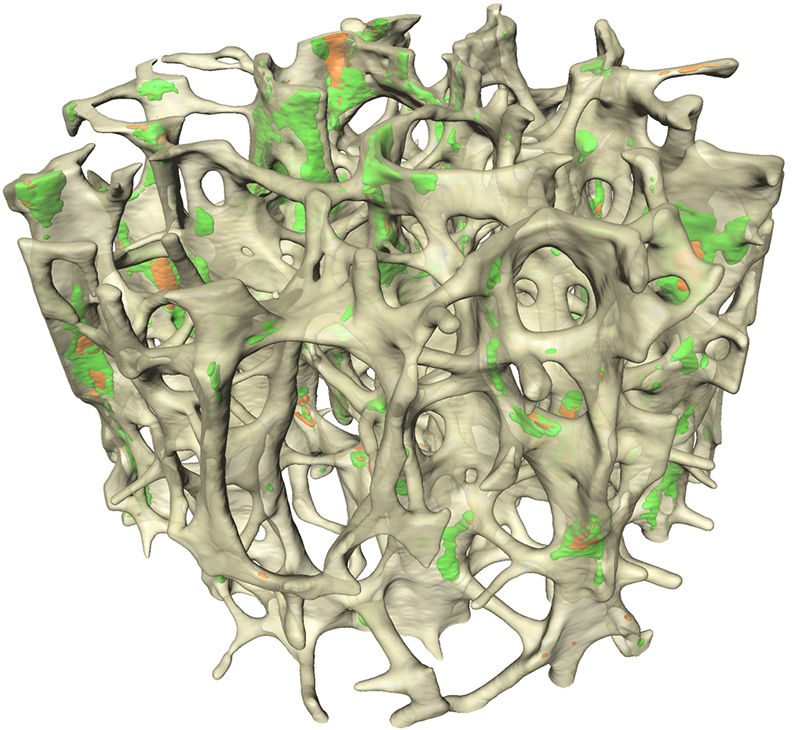'Function after failure' in bone translates to engineering strategy
By Tom Fleischman

When most things break, they fall apart and lose their mechanical function. There are ways to overcome this: To help make car and aircraft parts last longer, engineers often apply surface treatments that harden the surfaces to prevent cracks from starting.
But cancellous bone – found near joints and in the vertebrae – is just the opposite. It has a relatively spongy outer surface and more a brittle interior, giving it what’s known as material heterogeneity. And researchers at Cornell have found that this property allows the bone to do something better than most man-made materials – bounce back after it breaks.
“Our hypothesis was that when the bone repairs, it makes these little holes that initiate crack growth,” said Chris Hernandez, associate professor in the Sibley School of Mechanical and Aerospace Engineering and in the Meinig School of Biomedical Engineering. “All the theory behind it suggested that it was true, and it absolutely was not true.”
The combination of softer surfaces and brittle interior allows cancellous bone to direct cracks to locations where they are less detrimental, allowing the structure to recover its shape – to bounce back – after it breaks.
“That’s totally not what we expected from an engineering standpoint,” says Ashley Torres, a biomedical engineering graduate student and one of two individuals to lead the study. “But it allows the material to continue to function after failure.”
The group published its findings online Feb. 29 in the Proceedings of the National Academy of Sciences.
The ability to bounce back after breaking is important for bones because it allows the healed bone to look and function more like it did before the injury.
“We used to think that we had cancellous bone for the same reasons that we use foams in engineering, to absorb energy or make the structure more lightweight,” Hernandez said. “But it turns out that cancellous bone does something different. The way cancellous bone breaks actually makes it heal better.”
Everyday wear and tear creates microscopic fractures in bone that are constantly repairing themselves. That was thought to have played a major role in why elderly people are at particular risk for broken bones as a result of falls. But the Hernandez group found, instead, that it’s the material heterogeneity of cancellous bone that limits crack propagation and eventual failure.
“In the future, this could help in the design of new materials that can continue to perform after failure,” said Jonathan Matheny, the other graduate student leading the project.
Material heterogeneity in structures, the group proposes, could help mitigate the effects of flaws generated during manufacturing, which are often the cause of premature failure. Additionally, Matheny said these findings have implications for medicine, “to help us identify people at risk for an osteoporosis-related fracture and prescribe drug treatment.”
The group’s paper is “Material heterogeneity in cancellous bone promotes deformation recovery after mechanical failure.” Other contributors came from the University of California, Berkley; Trinity Dublin College, Ireland; and Case Western Reserve University, Cleveland.
This work was supported by grants from the National Institutes of Health and the National Science Foundation. Imaging data were collected in the Cornell Biotechnology Resource Center Imaging Facility, funded by the NIH.
Media Contact
Get Cornell news delivered right to your inbox.
Subscribe